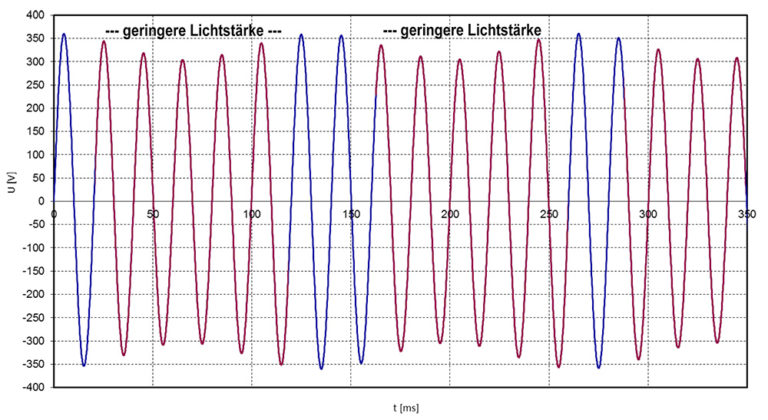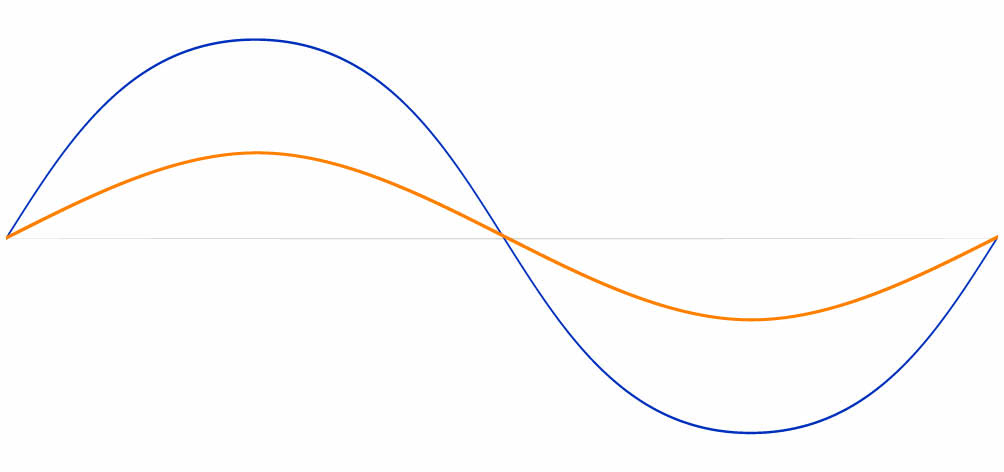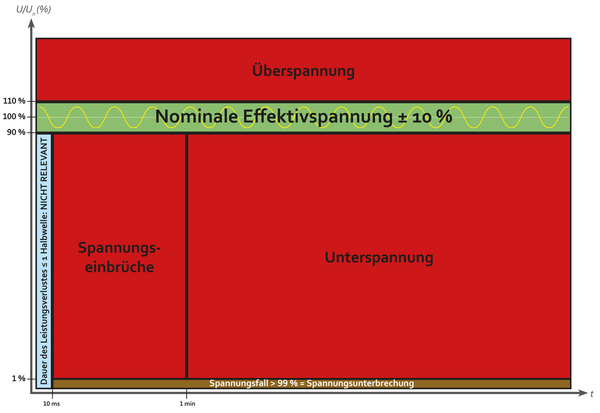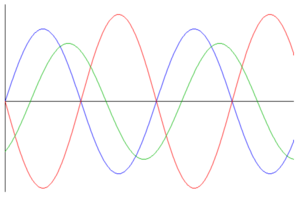Condition voltages
Flicker
The voltage supply in an industrial plant can be subject to temporal fluctuations caused by load changes of large consumers.
The flicker refers to the changes in the luminous intensity of unregulated lighting equipment caused by these fluctuations. As a value, it represents an important criterion for assessing the power quality in the power grid concerned. Since flicker affects the propagation of the voltage, it occurs over a large area and is not limited to one room. The strength of the flicker levels that occur is largely determined by the network impedance. Above a certain intensity, these light changes can be perceived by humans and, for example in offices, can put a strain on health and the psyche. In addition to the light changes, uncontrolled restarts of PCs, control errors, torque fluctuations in motors or network faults can also occur.
Voltage dips
(English “voltage dips”, American “voltage sags”)
A voltage dip refers to a sudden reduction in the rms value (< 1 min. when the nominal voltage deviates > 10%*) of the voltage at a given point in the power system when it drops below a predetermined threshold, followed by a recovery to the original voltage level within a short time interval. Voltage dips are considered to be a two-dimensional phenomenon that depends on the magnitude of the voltage and the time duration. In electrical power systems, they are the main cause of costly, unplanned production stoppages.
They often occur due to a short circuit and its interruption (clearing) or due to load changes, such as the switching on of larger machines. In the latter case, the voltage in the system drops abruptly at the internal resistance due to the high inrush current that occurs.
Normatively, limit values are specified to prevent the malfunction and failure of various devices. This includes frequency converters, switching power supplies, contactors, and in extreme cases, even robust loads such as induction motors.
.
Over-/ & undervoltages
(long-term voltage deviations from the nominal value)
An overvoltage is present as soon as the voltage exceeds the nominal voltage tolerance (+10%). A distinction is made between long-term overvoltage (one second or longer) and transients. Overvoltage is the responsibility of the power supplier, as they regulate the power supply.
Overvoltages can occur due to the following processes, for example: -technical defect of an installation in the vicinity imitating higher ones in network
-large load disconnects (-> balancing of power supply)
shutdown of a network segment by protective device (fuse disconnects a part from the network -> equalization of power supply)
Consequences of prolonged overvoltages can be thermal overload (for example at the transformer) or damage to electronic components (extreme case fire / explosion).
“Undervoltage” is when the voltage dip occurs for longer than 60 seconds. In the case of a voltage below the nominal voltage tolerance (-10%), a differentiation is made between the above-mentioned voltage dips and undervoltages.




